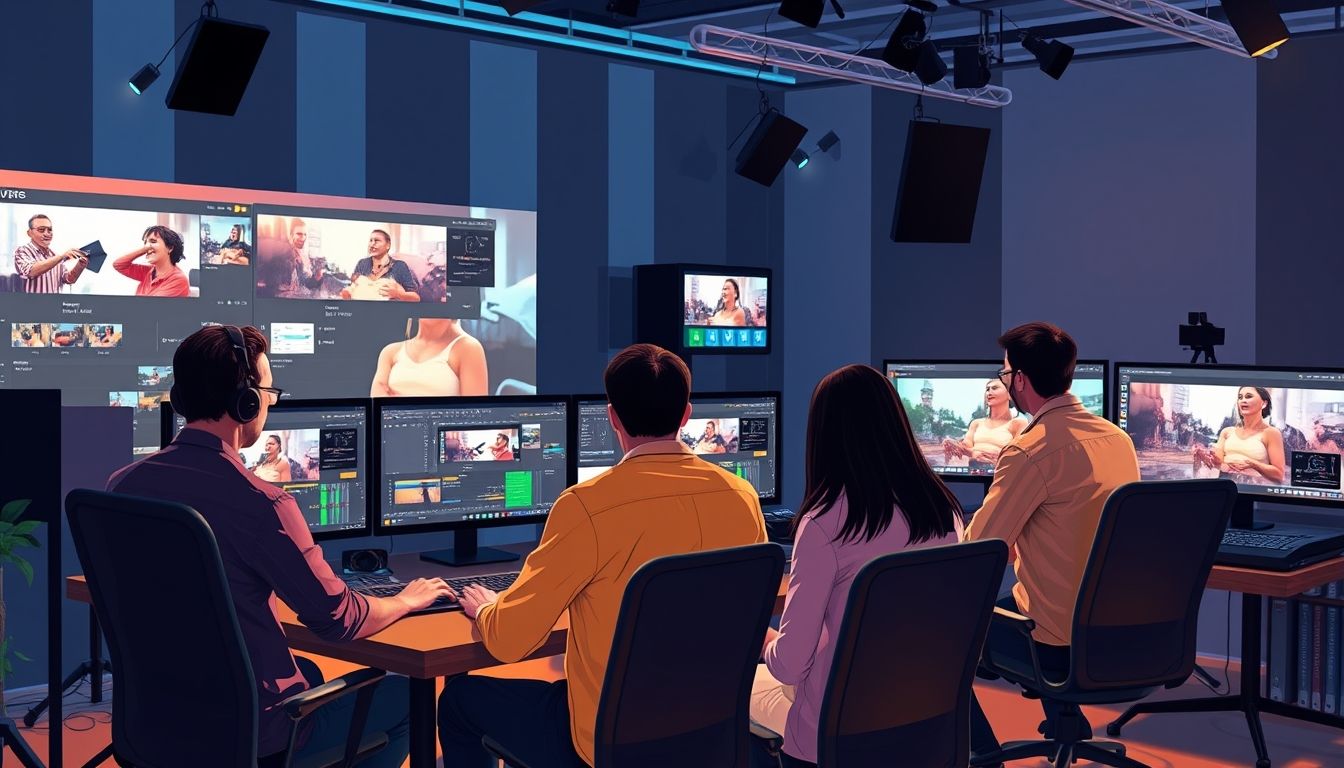Introduction: Why Video Editing and Montage?
In the age of visual content, video editing and montage have become essential skills required across various industries. From advertising and digital marketing to documentaries and educational content, video editors play a vital role in transforming raw footage into engaging and impactful stories. The demand for professional video editors is constantly increasing, opening doors to promising job opportunities and lucrative income.
Chapter 1: Essential Skills Required in Video Editing
Success in video editing requires a diverse set of technical and creative skills. Here are the most important ones:
- Specialized Software: Mastery of popular editing software such as Adobe Premiere Pro, Final Cut Pro, and DaVinci Resolve.
- Photography Basics: Understanding photography principles such as lighting, composition, and different angles.
- Color Theory: Knowing how to use colors to create a specific mood and influence the viewer.
- Visual Effects (VFX): Ability to add simple and complex visual effects to enhance video quality.
- Sound Design: Understanding the basics of sound design and adding appropriate sound effects and music.
- Storytelling: Ability to understand the story being told and translate it into a cohesive and engaging video montage.
Chapter 2: Necessary Tools and Equipment
To achieve the best results in video editing, you need a set of appropriate tools and equipment. Here is a list of the most important ones:
- Powerful Computer: With a powerful processor (CPU), sufficient random access memory (RAM), and a dedicated graphics card (GPU).
- High-Resolution Monitor: To display fine details in the video.
- Fast Storage Drive: SSD to store video files and speed up the editing process.
- Editing Software: Subscription to one of the popular editing software like Adobe Premiere Pro or Final Cut Pro.
- Professional Headphones: To hear the finest audio details.
- Microphone (Optional): For recording voice-overs.
Chapter 3: Building a Strong Portfolio
A portfolio is the key to attracting clients and securing job opportunities. Here’s how to build a strong one:
- Choose Your Best Work: Include the best projects you've done that showcase your skills and abilities.
- Project Diversity: Try to include diverse projects in various fields in your portfolio.
- Present Projects Professionally: Use a website or portfolio platform to display your projects attractively and organized.
- Get Reviews: Ask previous clients to write positive reviews about your work.
Chapter 4: Marketing Your Services as a Video Editor
After building a strong portfolio, you need to market your services to attract clients. Here are some effective strategies:
- Online Presence: Create a website or social media page to showcase your services.
- Contact Potential Clients: Contact companies and organizations that need video editing services.
- Participate in Exhibitions and Conferences: Attend exhibitions and conferences related to the video and marketing industry.
- Offer Deals and Discounts: Offer deals and discounts to attract new clients.
Chapter 5: Setting Appropriate Prices for Your Services
Setting appropriate prices for your services is an important challenge. Here are some factors to consider:
- Production Cost: Calculate the cost of equipment, software, and the time spent editing.
- Your Experience and Skills: The more experience and skills you have, the higher prices you can charge.
- Competitor Prices: Research competitor prices in the market and offer competitive prices.
- Project Type: Prices vary depending on the type of project and its complexity.
Chapter 6: Building Strong Relationships with Clients
Building strong relationships with clients helps you secure future projects and recommendations. Here are some tips:
- Effective Communication: Be communicative with clients and answer their inquiries quickly.
- Provide Excellent Customer Service: Exceed client expectations in providing service.
- Meet Deadlines: Adhere to specified deadlines.
- Request Reviews: Ask clients to write positive reviews about your work.
Chapter 7: Sources of Continuous Learning and Professional Development
The field of video editing is constantly evolving, so continuous learning and professional development are essential. Here are some sources:
- Online Training Courses: Platforms like Udemy and Coursera offer specialized training courses in video editing.
- Educational YouTube Channels: Many YouTube channels offer free video editing tutorials.
- Specialized Books and Articles: Read specialized books and articles in the field of video editing.
- Participate in Workshops and Conferences: Attend workshops and conferences related to the video industry.
Chapter 8: Common Mistakes in Video Editing and How to Avoid Them
To avoid common mistakes in video editing, you should be aware of them and how to avoid them. Here are some common mistakes:
- Lack of Pre-Planning: Pre-planning helps organize work and avoid mistakes.
- Random Editing: Editing should be consistent and logical.
- Neglecting Sound Quality: Pay attention to sound quality and add appropriate sound effects.
- Using Excessive Visual Effects: Visual effects should be used moderately.
Chapter 9: The Future of Video Editing and Montage
The future of video editing and montage looks promising with continuous technological advancements. Here are some future trends:
- Virtual Reality and Augmented Reality: Increasing demand for video content for virtual reality and augmented reality.
- Artificial Intelligence: Using artificial intelligence to simplify editing processes.
- 3D Video: Increasing popularity of 3D video.
- Short Content: Continued growth in the popularity of short content such as TikTok and Instagram Reels videos.
Chapter 10: Inspiring Success Stories in the Field of Video Editing
Many video editing professionals have achieved great success in this field. Here are some inspiring stories:
Example 1: Khaled, a Saudi young man who started as a freelance video editor and achieved great success by providing his services to major companies in the Kingdom. Khaled used social media to build his personal brand and attract clients.
Example 2: Maryam, an Egyptian graphic designer who learned video editing and became specialized in creating engaging educational videos. Maryam's videos have helped thousands of students understand difficult concepts.
Conclusion: Video editing and montage offer great opportunities to profit and succeed in the age of visual content. By acquiring the necessary skills, building a strong portfolio, and marketing your services effectively, you can achieve your professional and financial goals.




